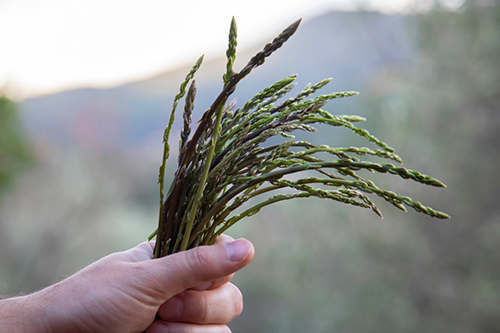Contents
Asparagus is the terminal area of the stems of the asparagus plant (young buds), which grow in the sunlight. They remain white since they do not contain chlorophyll. While asparagus is an exquisite food, green asparagus is better for medicinal purposes because it presents a higher concentration of active components.

Asparagus Plant Scientific Facts
- Scientific Name – Asparagus officinalis L.
- French – Asperge.
- Spanish – Esparraguera, esparrago.
- Environment – This plant is widely spread on sandy soils and river banks in central and southern Europe and most of America. It is cultivated in many countries in Europe and America.
- Description – The herbaceous plant of the Liliaceae family grows up to one and a half meters high. From its stem, soft needles grow, which are modified branches. It has tiny leaves and flowers, the color of which is white or gray. The fruits are red berries.
- Parts of the plant used medicinally – Young stems (asparagus) and the root.
Healing Properties
The ASPARAGUS plant contains asparagine (a substance that gives urine a special odor), glycosides (conipherine and vanillin), metylmercaptane, an essential oil, rhutine, and tannin. These are its properties.
- Diuretic—The listed substances act on the kidneys, stimulating their elimination and provoking a massive increase in urine production. Consuming asparagus is beneficial whenever renal function stimulation is required, especially for edema (retention of liquids) and obesity (asparagus is low in calories).
- Depurative—Asparagus treatments have rendered good results for chronic eczema due to their stimulating properties that stimulate the skin’s elimination functions.
- Laxative – Asparagus fiber increases fecal bolus and is recommended for chronic constipation.
Moreover, asparagus ROOT contains saponin and certain sugars. It has the same diuretic properties as asparagus.
Warning
Asparagus irritates renal tissues when taken in high doses; therefore, it must not be taken to treat nephritis, glomerulonephritis, or other inflammatory kidney conditions.
How to use Asparagus
- Wild or cultivated asparagus is consumed in different cookery recipes.
- Dry root of asparagus is used via infusion, prepared with 50 grams per liter of water. Drink three cups daily.
DISCLAIMER: All content on this website is presented solely for educational and informational objectives. Do not rely on the information provided as a replacement for advice, diagnosis, or treatment from a qualified medical expert. If you are pregnant, nursing, or have any preexisting medical concerns, talk to your doctor before using any herbal or natural medicines.
REFERENCES
- George D. Pamplona-Roger, M.D. “Encyclopedia of Medicinal Plants.” George D. Pamplona-Roger, M.D. Encyclopedia of Medicinal Plants. Ed. Francesc X. Gelabert. vols. 2 San Fernando de Henares: Editorial Safeliz, 2000. 649. Print [asparagus plant]
- Health.com https://www.health.com/nutrition/asparagus-health-benefits
- CDC https://www.cdc.gov/ncbddd/folicacid/about.html
